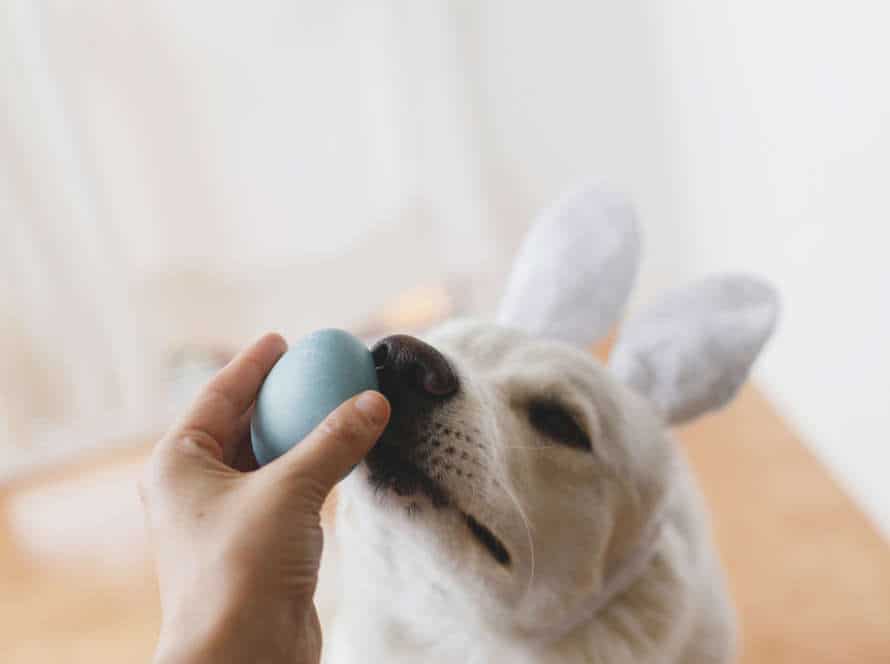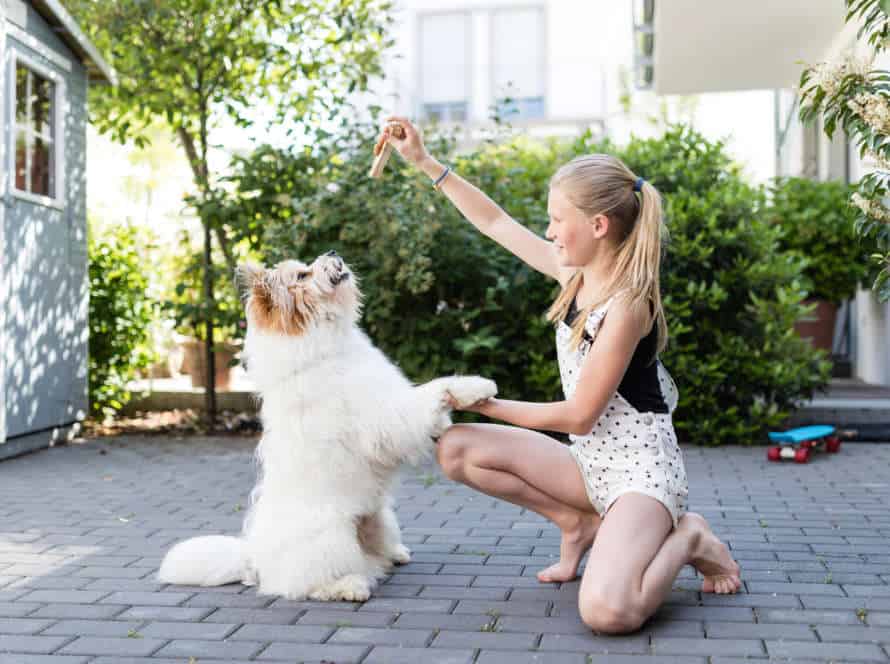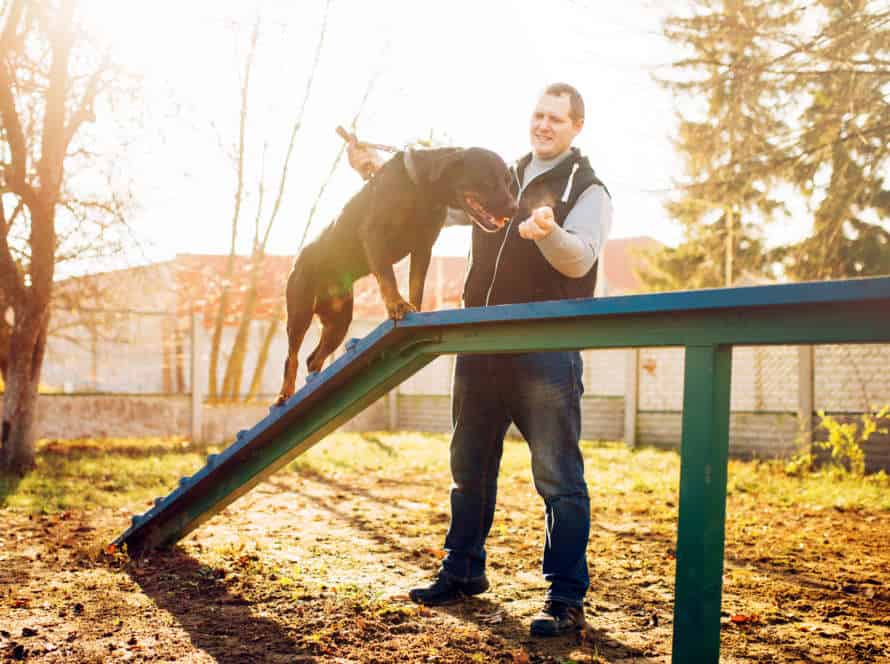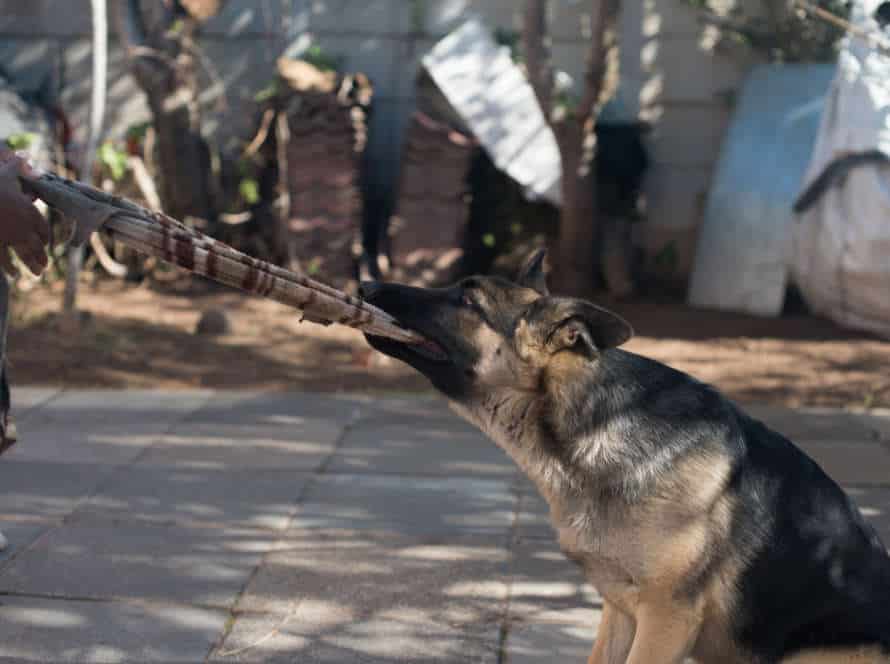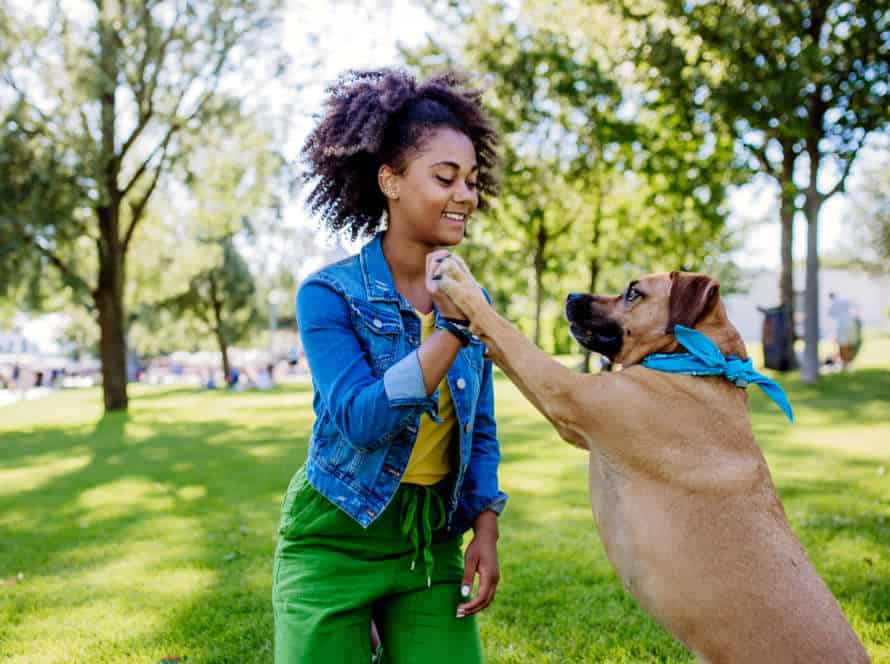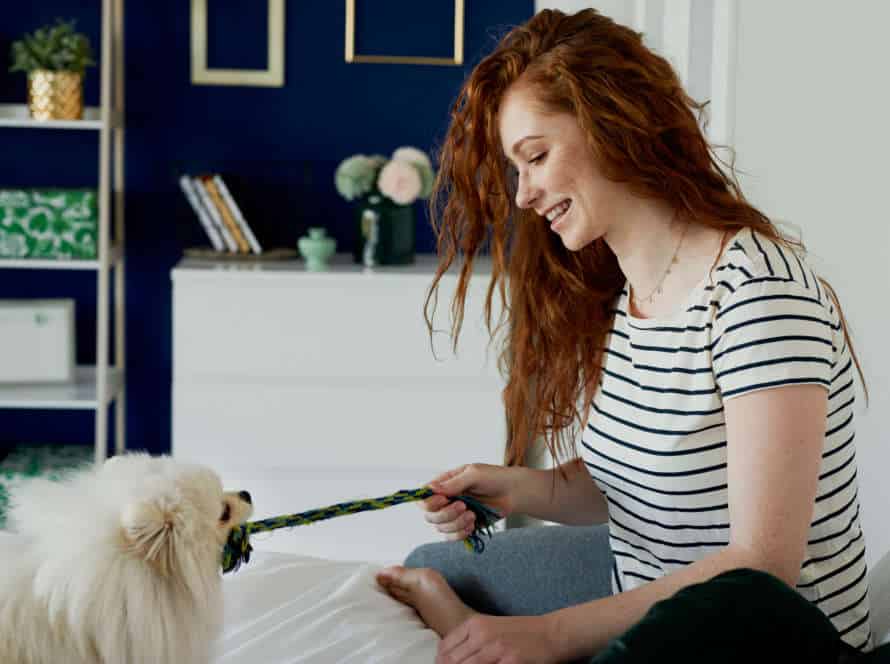Understanding Dog Training and Behavior
Teaching your pup to balance items is essential. This helps reinforce basic obedience and strengthens the bond between you and your dog. Understand how dog training works and be aware of your pup’s behavior. To successfully accomplish this task, let’s explore how to train your dog to balance items.
The Science Behind Conditioning
Conditioning is a psychological process. It’s when an animal links a behavior or response to a particular reward. This can lead to a learned behavior. In dog training, conditioning is an important part of the process. It’s a useful tool for teaching dogs new tricks and good habits.
For example, you can condition your dog to balance an item. This involves encouraging your pup to place their paw on the item, and rewarding them when they do it correctly. This is based on positive reinforcement. Meaning, when the dog behaves the right way, they get a reward. Over time, they learn that the behavior leads to a reward.
Conditioning is one of the most humane and effective methods of training dogs. It makes the experience pleasant for both the pup and the human!
How Dogs Learn
Pups learn through classical and operant conditioning. Classical is learning through association, while operant is learning with rewards and punishments.
Balance practice is an enjoyable and stimulating exercise that can train your pup to balance better, focus more and obey commands. Here’s how:
- Start with placing a treat on the pup’s nose and say “balance” or any other command.
- Gradually move the treat up to their forehead and cheer them on with treats or praise.
- Once they can balance treats on their head, try more challenging items like a ball or toy.
- Be patient and train only for short periods to avoid tiring the pup.
Pro tip: Use a clicker or a consistent verbal cue e.g. “good job” to let your pup know when they do something right in training.
Reinforcement Training Basics
Reinforcement training is a great way to teach your pup new behaviors and reinforce existing ones. Paired with positive reinforcement, it encourages them to repeat their desired actions.
Here are the basics to get started:
- Firstly, clearly communicate the desired behaviors to your dog.
- Use positive reinforcement techniques such as treats, toys and praise to link good behaviors with positive outcomes.
- The process of reinforcing these behaviors should be consistent and repeated to create a lasting change.
- Practice and reward good behavior in various settings to make a strong connection between desirable behavior and positive results.
- It’s important to remember the balance – use positive reinforcement alongside appropriate discipline to show your dog the boundaries and expectations.
By following these reinforcement training basics, you can help your furry friend learn to balance items. With patience and consistency, your pup will soon ace this skill!
Teaching Your Dog to Balance Items
Balance items? Fun! You and your pup can have a blast. Obedience training? Teach your pup to focus? Yes! Mental stimulation? You bet! Boost confidence? Absolutely! Plus, keep your pet active and entertained? Of course! Ready to learn how to teach your dog to balance items? Let’s go!
Introducing Basic Commands
Introducing basic commands to your pup is the first step for teaching them balance. This can help with their coordination, focus, and even aid you with tasks. Here are three to start:
- “Sit” – Getting your dog to be still and centered before balancing.
- “Focus” – Train them to focus on you and ignore distractions.
- “Stay” – Command them to stay in the balanced position.
With determination, you can teach them more complex balancing movements and even add items of different sizes and shapes.
“Sit” Command for Balance
Teaching your pup the “Sit” command is a must before trying to teach them how to balance items. This will help them learn self-control and stop them from getting too excited during the balancing.
Here’s how:
- Hold a treat in front of their nose.
- Then slowly move it up above their head.
- Their hindquarters should lower to the ground as they follow the treat.
- Once they sit, give them the treat and praise them.
- Repeat this a few times until your pup knows the “Sit” command without help.
- When they’ve got it, it’s time to teach them to balance items on their nose or head.
Be patient and use positive reinforcement throughout the entire training process. Pro Tip: Make sure the items you use for balancing are safe for your pet and won’t hurt or bother them.
“Stay” Command for Balance
The “stay” command is great for teaching your pup balance. Here’s how:
- Get them to sit in front of you.
- Place a simple object on their head or nose. Examples are a tiny book, etc. Give the command “stay“.
- Give your pooch a treat for staying still and balancing the object.
- Make the object harder, like larger or rounder items.
- When they can balance objects, use the “stay” command to teach other tricks, like walking on hind legs or jumping through hoops.
Be patient & consistent. Reward your pup for a job well done!
Building Up to Balancing Tricks
Train your pup to balance items? It’s a fun and impressive stunt! Patience and practice are key. Here’s how to do it:
- Start with basic obedience training – like sit, stay and come – to build communication and trust.
- Introduce them to the item they’ll be balancing – like a ball or plate – and encourage exploring.
- Begin with basic balancing exercises. Have them balance the item on their nose or between their paws. Reinforce with treats and positivity.
- Gradually make the exercises harder. Add movement and distractions. Practice on different surfaces.
Reward progress with treats and praise. Always end on a positive note!
Basic Object Balancing
Teaching your pup to balance objects is an enjoyable and rewarding experience that can help with their coordination and focus. To begin basic object balancing:
- Pick a small and steady item, such as a wooden block or plastic container.
- Put the object on the ground and urge your pup to sniff it and explore it.
- Once they’re familiar with the object, hold it a few inches off the ground and encourage your pup to tap it with their nose.
- Gradually raise the height and length of the balancing task as your pup gets more confident and adept.
- As they progress, introduce new objects with different sizes and shapes to keep the activity engaging and challenging.
Intermediate Object Balancing
Intermediate object balancing is essential to teach your pup. It builds on basic balancing and adds more challenges. Here are some tips:
- Start with easy items, like a tiny ball or toy bone.
- Move up to tougher objects, like a spool of thread or a plastic bottle with water.
- Vary size and shape of the objects to test your dog’s capabilities.
- Introduce movement, like rolling or bouncing, to help your pup balance.
- Gradually increase height and length of the task for more confidence and better balance.
- Reward good behavior with positive reinforcement like praises, treats, or playtime.
Advanced Object Balancing
Teaching your pup to balance objects can be a fun, fulfilling task! You just need patience and consistency. Here’s how:
- Begin with lighter items, like plastic plates or small balls.
- Gradually add heavier or trickier items, like books or large toys.
- Be sure to get your pup to use different body parts to balance, such as their nose, paws, or tail.
- Use positive reinforcement like treats and praise when they progress.
- Keep sessions short to avoid frustration for both of you. Pro Tip: Supervise your pup when balancing, for safety and to avoid accidents.
Tips and Tricks for Balancing Items
Teach your pupper to balance objects! It’s a great way to make them smarter, more active, and to bond with them. With our tricks, they’ll be balancing items like a pro. Here are some tips to get your pup to master the art of balancing:
Finding the Right Objects to Balance
Finding the right objects for balancing is essential. It makes training easier and more successful. Here are some tricks to help you:
- Start with light items like plastic cups or small balls.
- Teach your dog the basics.
- Gradually increase the weight and difficulty of items.
- Look for objects with flat surfaces or a stable base.
- Avoid heavy or sharp objects. These could harm your dog.
- Always supervise during training. Stop if you notice any signs of discomfort.
- With practice, your dog can become a master at balancing!
Using Treats and Positive Reinforcement
Teach your pup to balance items with treats and positive reinforcement!
Here are some tips:
- Introduce the item, like a ball or toy. Place it on their nose and tell them to balance it.
- Reward them for successfully doing it.
- Increase the time they can balance it gradually.
- Practice regularly and be patient.
- Remember to use rewards and positive reinforcement when they do good!
Incorporating Balancing into Daily Exercise
Incorporating Balancing into Daily Exercise
Tips to get started:
- Stand on one foot for 30 seconds then switch. For extra challenge, close eyes or use a wobble board.
- Include yoga poses like tree pose, warrior III pose, and half-moon pose.
- Use an exercise ball for squats/push-ups, making balancing harder.
The Art of Balancing: Teach Your Dog to Balance Items
Here are tips:
- Start by having your dog hold a treat on their nose and reward them.
- Place small, lightweight objects on their nose and reward when they hold it steadily.
- Increase the weight/size of the objects, rewarding for progress.
Troubleshooting Common Balance Training Issues
Balance training is an awesome way to challenge your pup and teach ’em new tricks. But some dogs have a hard time getting the hang of it. If you’re stuck, it’s time to find out what’s wrong and get back on track. Here’s a look at common balance training issues and how to solve ’em.
Dog Loses Interest
Dogs often lose focus when doing balance training, which can be disheartening for the pet and owner alike. Here are some tips for sorting out usual balance training troubles:
- Begin with basic objects and suitable surfaces. Use short planks or small pillows on the ground before continuing with higher objects like balance balls or wobble boards.
- Keep the training sessions short, frequent, and entertaining. Dogs quickly become bored or sidetracked, so limit each session to a few minutes. Show appreciation and cheer when your dog succeeds.
- Change up the exercises and environment to give your pup new challenges. Utilize distinct objects and surfaces, such as inclines or stairs, to make sure your dog is coping with various circumstances.
By adhering to these tips, you can conquer typical balance training issues, which will lead to a well-trained and balanced dog.
Dog Can’t Balance Heavier Items
Sometimes, when balance training for dogs, they can struggle with heavier items. This can be frustrating for both the dog and the trainer. Here are some tips to help!
- Firstly, make sure the dog has core strength and balance. To do this, start with lighter objects and slowly increase the weight.
- Secondly, use a platform or stool to aid balance. Have the dog place its front paws on the platform, then gradually increase the size and height as the dog gets more comfortable.
- Finally, reward the dog with treats, praise, and affection! This will keep them motivated and help them link balancing with positive reinforcement.
Pro tip: Patience is essential! Each dog is unique and progress may vary. Consistency and perseverance are key.
Dog Struggles with Commands
Training your pup to balance can be difficult. If you’re facing issues, here are some tips to help you and your furry friend succeed:
- Issue: Dog keeps tipping over.
Tip: Use smaller items or reduce the duration of training. Treats are great for encouraging balance. - Issue: Dog drops item instead of balancing.
Tip: Teach the ‘hold’ command with a non-balancing item. Then, gradually introduce the balancing item with treats. - Issue: Dog gets distracted.
Tip: Choose a quieter spot or use a leash. Make sure your pup is energized, not tired.
Patience and persistence are key to training. With practice, your pup will balance like a pro.
Conclusion and Next Steps
In the end, training your pup to balance objects can be tons of fun! It takes patience, regularity, and being open to adjusting your coaching techniques to fit your pup’s particular needs.
To review:
- Start with basic items like treats or toys before advancing to more demanding things.
- Use positive reinforcement techniques like treats, appreciation, and playtime to motivate your pup to “balance” the object.
- Be patient and consistent, practicing for short periods daily rather than attempting to do a lot in one go.
- Have fun and savor the experience of teaching your pup a new trick!
Finally, try out different objects and surfaces to assist your pup in building self-assurance and mastering their balancing skills. With commitment and practice, you and your furry friend can master the art of balancing!
Frequently Asked Questions
Q: What is the art of balancing?
A: The art of balancing is a technique used to train dogs to balance items on their nose or head.
Q: Why should I teach my dog to balance items?
A: Teaching your dog to balance items can be a fun game for both of you, and it’s also a great way to improve their focus and concentration.
Q: What items can my dog balance?
A: Your dog can balance a variety of items, such as treats, toys, balls, and even household objects like cups or books.
Q: How do I train my dog to balance items?
A: Start by teaching your dog basic obedience commands like “sit” and “stay.” Then, gradually introduce the item you want them to balance, using positive reinforcement techniques like treats and praise to encourage them to balance the item on their nose or head.
Q: Is balancing items safe for my dog?
A: Balancing small, light items like toys, treats, or balls is generally safe for most dogs. However, larger, heavier items like books or cups should be avoided as they can fall and potentially injure your dog. Always supervise your dog closely and use your best judgment when choosing which items to balance.
Q: Can any dog learn how to balance items?
A: Yes, any dog can learn how to balance items with practice and patience. However, some breeds may have an easier time than others due to their natural physical abilities or temperament.


